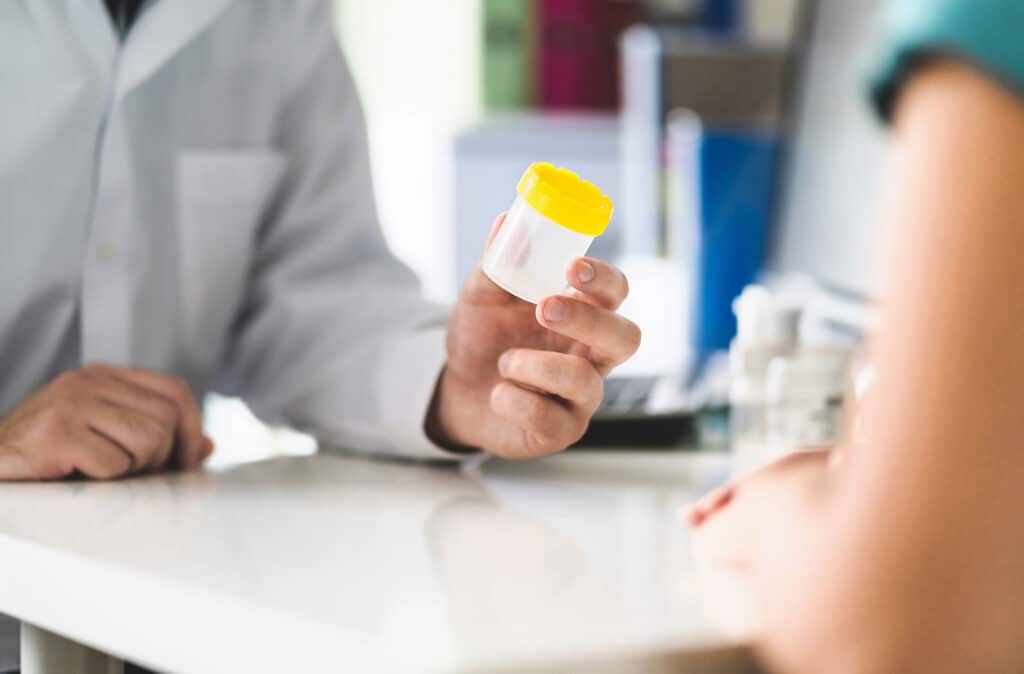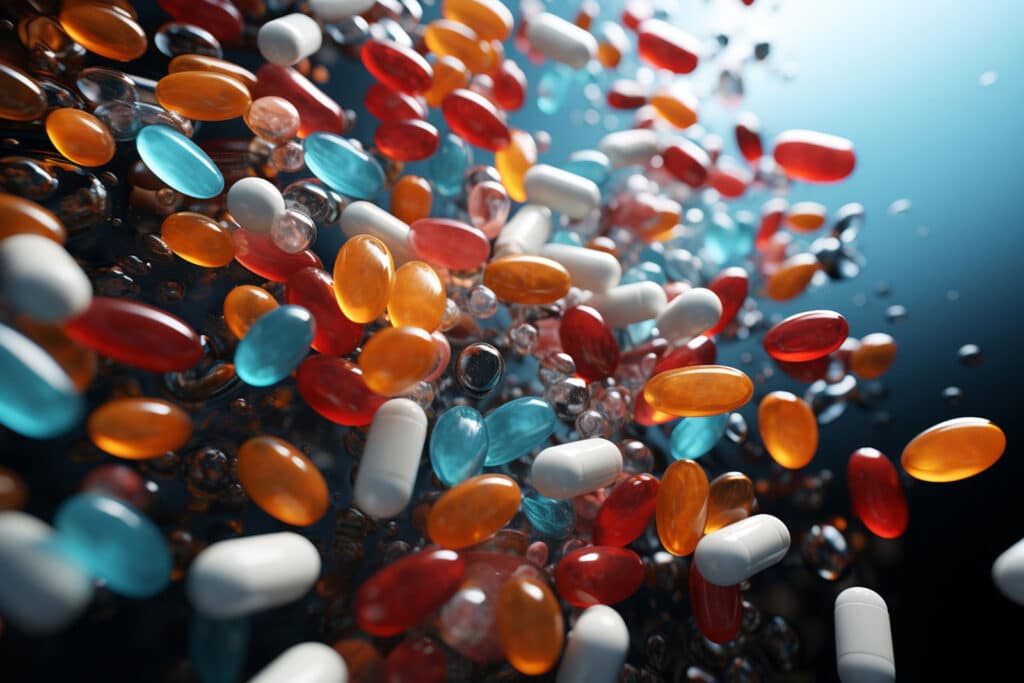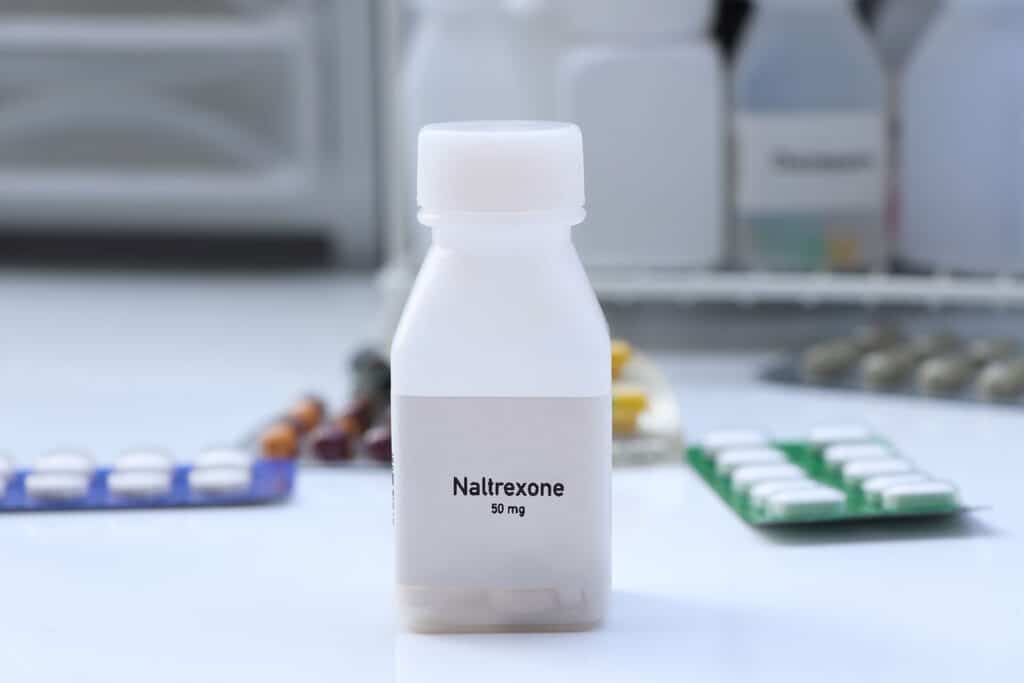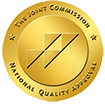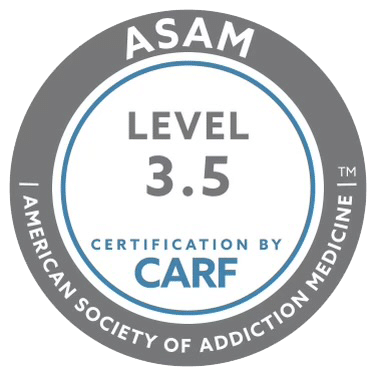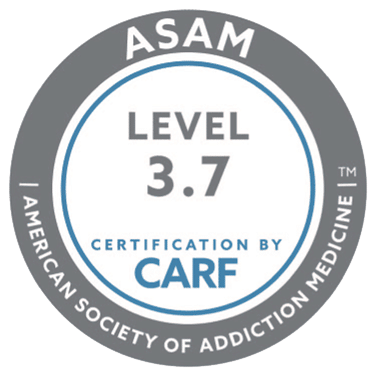When people consume alcohol, the substance is detectable in their urine. There are a few different types of urine tests. Ethanol, ethyl glucuronide and ethyl sulfate tests are the main ones that provide dependable results.[1] An EtG test is often the preferred method when it comes to legal matters. Judges like this test because of its extended look-back period.[2] This guide will cover important information about alcohol metabolism, EtG accuracy and other important factors.
Understanding EtG Testing
EtG is an alcohol metabolite. After alcohol enters a person’s bloodstream, the blood takes it to the liver. Although most of it is eliminated, it is broken down into chemicals. Those enter the kidneys for elimination. However, the metabolic process of breaking down alcohol leaves behind some biomarkers for a period.[2] EtG is one of them, and a special test detects it. When the substance is detectable, the test shows a positive result. Testing involves mixing urine with a color-changing chemical that activates when EtG is present.
The color change is measured as well, and various readings can indicate consumption time. For example, a very low positive result may indicate exposure to alcohol-containing products or recent light drinking. However, a high positive result may happen because of heavy drinking on the same day. More factors about test results will be discussed in a later section.
In comparison with blood-alcohol content tests, EtG tests detect consumption for a longer period. BAC tests typically show alcohol consumption within the past 12 hours.[1] The EtG detection window will be discussed more in an upcoming section. An EtG test is important for certain legal matters, and it may be useful for some treatment-related purposes.
Understanding Alcohol Metabolism and Detection
Several processes are involved in alcohol metabolism. The most common pathway includes enzymes called aldehyde dehydrogenase and alcohol dehydrogenase.[3] They help break up molecules of alcohol and facilitate elimination. ADH turns alcohol into acetaldehyde, which is a carcinogen. That carcinogen breaks down into an acetate byproduct. Acetate turns into carbon dioxide and water before it is eliminated. Other enzymes help turn alcohol into acetaldehyde as well. Although ADH is primarily responsible for alcohol metabolism, EtG is a resulting metabolite that can be a biomarker.[4,5]
Various factors can influence how quickly and effectively the body metabolizes alcohol. The presence of food can impact metabolism, and the amount of alcohol a person consumes affects metabolic processes. Also, a person’s age, weight and sex can influence their alcohol metabolism. The ability of the liver to produce dehydrogenase enzymes is an influential factor as well.[6]
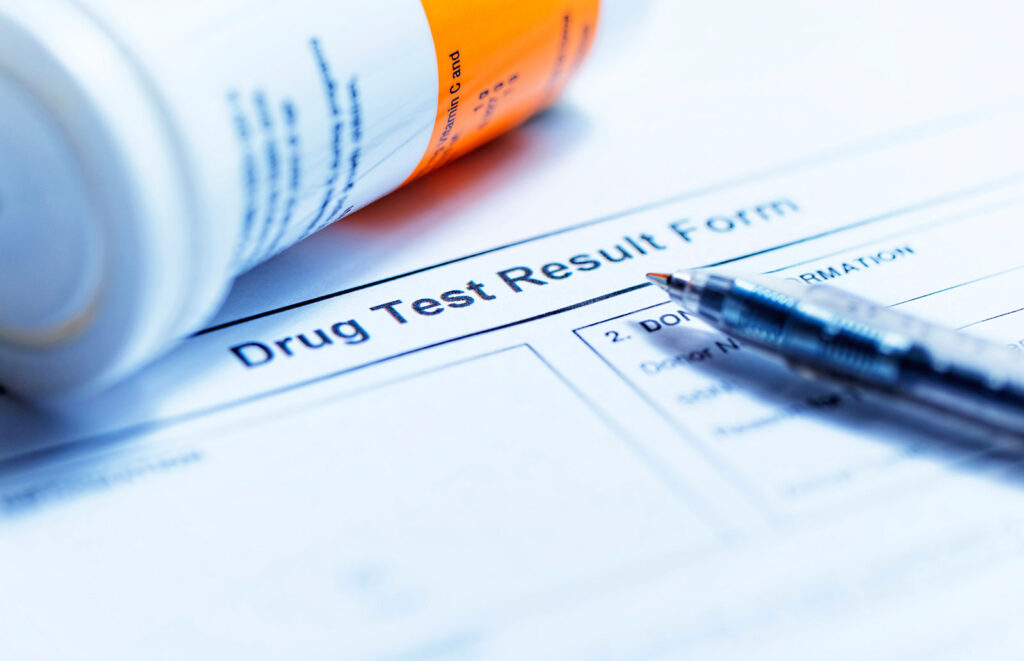
Understanding the EtG Detection Window and Test Results
The detection window for EtG tests is between 24 and 72 hours.[1] However, EtG may be detectable up to 80 hours after heavy drinking. There are three levels of test results. These are the levels:
- A very low positive result is between 100 and 500 ng/mL.
- A low positive result is between 500 and 1,000 ng/mL.
- A high positive result is greater than 1,000 ng/mL.
As stated earlier, a very low positive result may mean that a person was exposed to an alcohol-based product. For example, the person may have used hand sanitizer several times. It may also indicate that a person drank heavily a few days ago or lightly the day before. A low positive result may happen because of drinking within the past couple of days or very recent exposure to alcohol-based products. Drinking the same day and heavy drinking the day before are common causes of high positive results.
Accuracy and Reliability of EtG Test Results
There are some limitations with EtG tests. The alcohol metabolism factors discussed earlier are important considerations with test results. EtG tests are about 70% accurate.[1] It is important to remember that the detection window is also somewhat short. However, it is longer than the detection time for some other tests.
In some settings, people may find ways to swap urine samples with other people. They may also be able to dilute samples. Although direct supervision may mitigate dishonesty challenges, it can make people feel uncomfortable. It may also not be suitable in all situations. For example, supervision may be appropriate for court-related issues. However, it is an invasion of privacy for an employment screening.
Inaccuracy may occur either way. For example, a person who recently drank heavily may have a negative result. Also, there are potential causes of false positives.[2] These are some common examples:
- Recent hand sanitizer use
- Some over-the-counter substances
- Use of certain cleaning products
- Recent ingestion of sacramental wine
- E. coli contamination
Another uncommon potential cause is endogenous alcohol. Some studies show that certain chemical reactions in the body can cause it to create ethyl alcohol.[2] This substance shows as a small percentage when it exists.
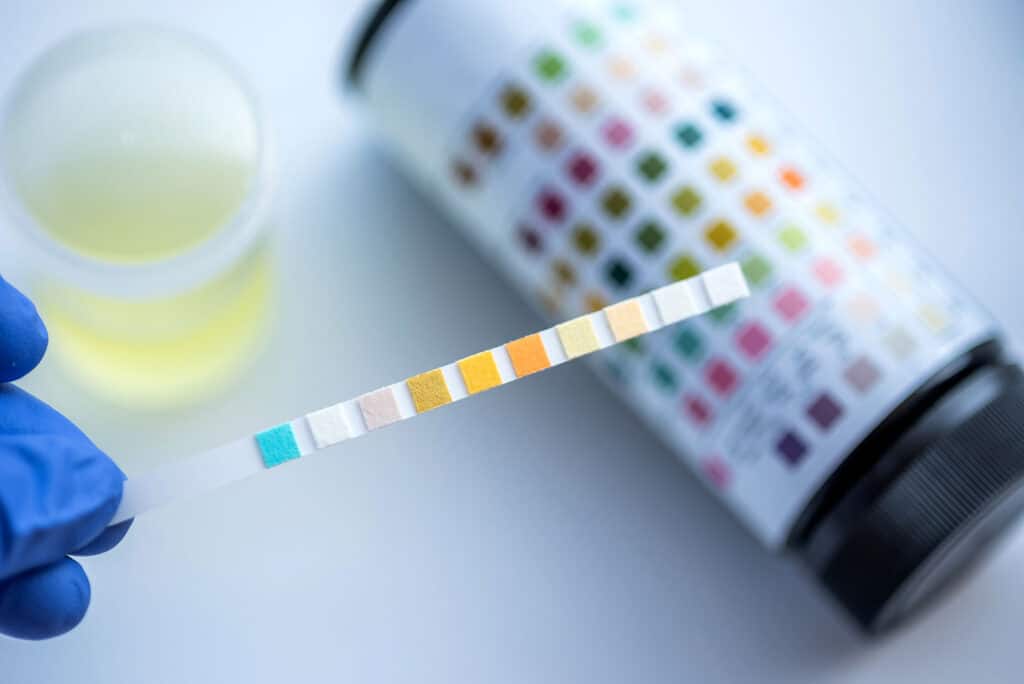
EtG Versus Other Tests
Other testing methods that do not involve urine are also available. Blood, breath and hair tests are some examples.[1] As discussed earlier, BAC tests have a short detection window. They can detect consumption levels. There are other types of blood tests as well. Some can test for EtS and EtG. CDT blood tests can show heavy consumption. PEth tests show consumption within the past few weeks.
Law enforcement entities and some employers may use breath tests. These tests can detect alcohol consumption levels within the past several hours. Hair follicle tests can show alcohol consumption within the past 90 days. As a rule, urine and blood tests are the most accurate options.[7] The tests that entities choose to use may depend on whether the goal is to detect consumption level or recency of consumption.
Potential Drawbacks of EtG Testing
Since an EtG test has a reasonable detection window, it is useful for many court-related issues. It is also useful for any zero-tolerance alcohol abstinence program. However, the test may not be suitable in all environments. It does not show current intoxication, and it is not recommended for workplaces.[8] Employers may use other types of tests that show current intoxication.
Legal and Ethical Considerations
It is important to keep ethics and legality in mind. Treatment facilities, certain workplaces and law enforcement agencies may use different types of alcohol tests for legitimate purposes. However, the testing must be conducted ethically in the specific situation. For example, a test may be ordered for a person who is on probation for a legal matter. It is important to follow ethical and legal guidelines for consent.
There should be clear consequences outlined for any positive test results. For instance, a person who is in a court-ordered treatment program may face various legal consequences. The case details and the jurisdiction’s laws may guide the development of consequences for legal matters. Since there is a possibility of a false positive, it is also important to have a clear process for appealing or disputing the result.
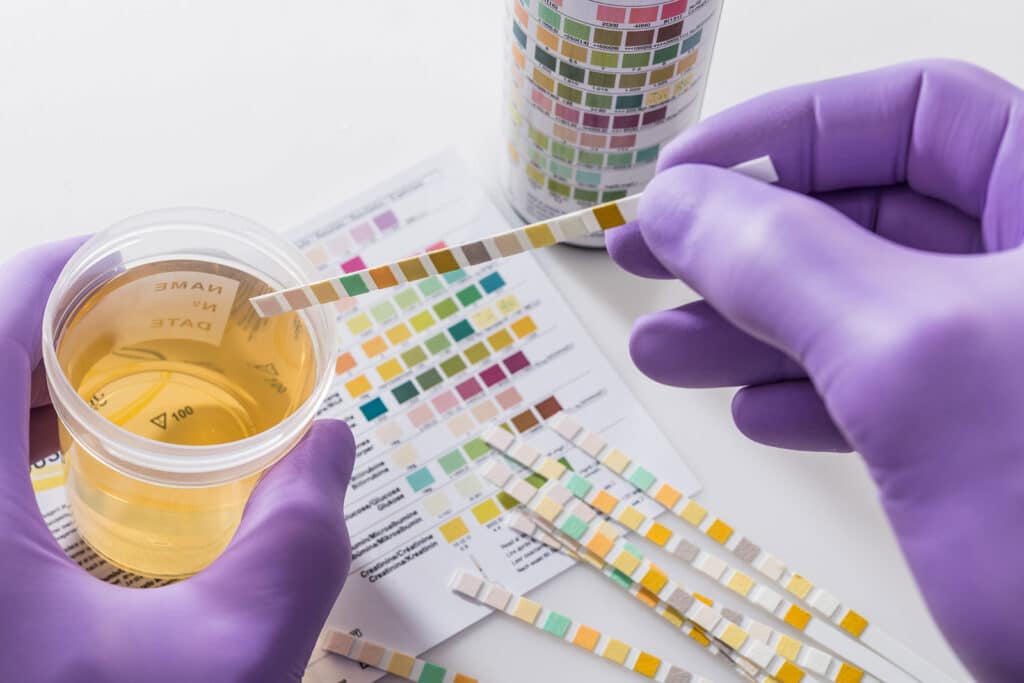
Overcoming Challenges of Alcohol Detection
Inaccuracy risks come in several forms. It is important for any entity that administers EtG tests to use proper procedures. These are some important instructions to reduce inaccuracy risks:
- Check the test kit’s expiration date, and throw it away if it is damaged or expired.
- Ensure that the urine container is sterile.
- Have test subjects wash their hands before providing a sample.
- Explain the proper procedure for cleaning external genitalia before test subjects produce a sample.
- Wear sterile gloves when handling any urine sample.
When testing is planned, it is important to disclose information about potential false positives to testing subjects. Ask them to abstain from using alcohol-based products. These are a few examples:
- Alcohol-based cleaning products and sanitizers
- Fermented foods
- Non-alcoholic drinks
- Alcohol-based cosmetics
- Aftershaves and aerosol sprays
Although it is possible to use other testing methods, there may be drawbacks in certain situations. For example, blood tests take longer and may be more uncomfortable for subjects in treatment programs. They may also be more expensive for the administering entity. Breath tests have a much shorter detection window. When used properly, EtG tests provide comprehensive information at an affordable cost. They provide solutions for monitoring recovery program participants, people on probation and others. Those solutions help drive incentives to avoid harmful alcohol use in various situations.
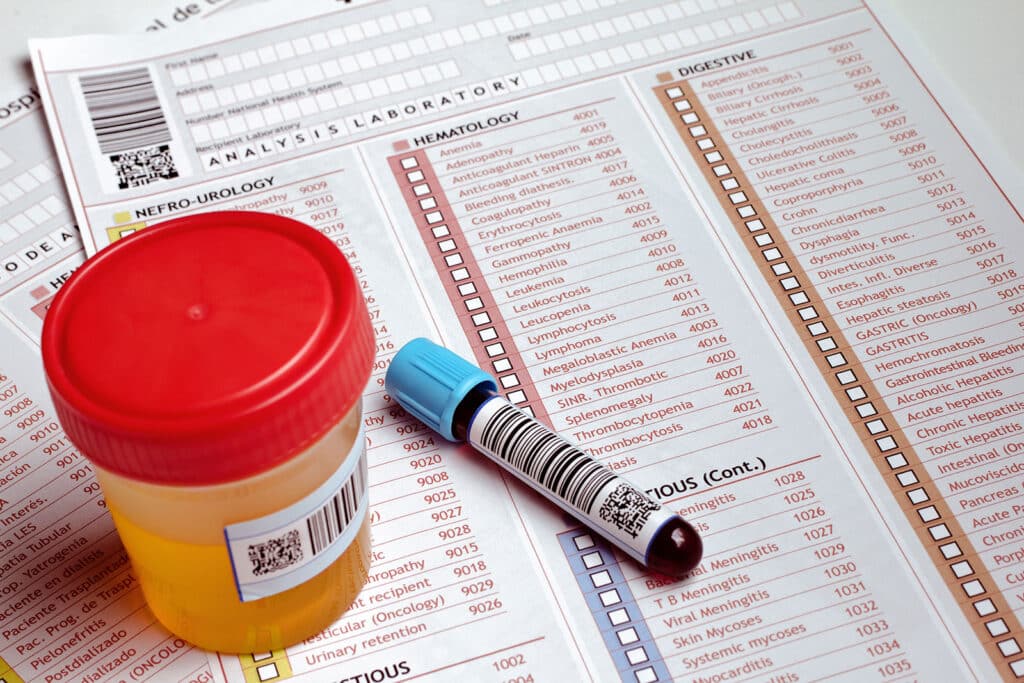
Conclusion
To learn more about alcohol testing in recovery, please reach out to Recreate Behavioral Health. As our name suggests, we help people recreate their futures by overcoming addiction. Participants learn valuable strategies to use daily with our evidence-based approaches to addiction treatment. We provide compassionate support in a world-class facility, and we offer a variety of program structures.
References
[1] https://www.healthline.com/health/urine-test-alcohol
[2] https://www.baronedefensefirm.com/etg-testing-for-alcohol-by-dui-court.html
[3] https://www.sciencedirect.com/science/article/pii/S0306987720300797
[4] https://www.researchgate.net/figure/Scheme-showing-the-hepatic-metabolism-of-ethanol-including-its-oxidative-metabolites_fig2_344304932
[5] https://www.ncbi.nlm.nih.gov/pmc/articles/PMC7733326/
[6] https://www.bgsu.edu/recwell/wellness-connection/alcohol-education/alcohol-metabolism.html
[7] https://www.webmd.com/mental-health/addiction/breath-alcohol-test
[8] https://www.nationaldrugscreening.com/blogs/understanding-workplace-alcohol-testing/


